If looking to try InsideTracker for yourself, they’ve given me a code for Lack of Hustle readers – LOH10 for 10% off any of the packages + a free InnerAge test ($99).
Why InsideTracker?
At the end of April, InsideTracker asked if I’d be interested in trying out their service for a full blood analysis to see where I stand across a panel of tests – checking everything from vitamin and mineral levels, to cholesterol, to testosterone, to cortisol. You name it, they’d test it.
Given that I’m doing high-volume training and am vegan, I’ve been curious about where I stand across a number of these biomarkers. While I eat very well, tons of fruits and vegetables with little to no processed foods, generally feel good, and have performed well in races over the past couple years, I figured it was about time to check in on my body in a more scientific manner.
The ease of getting a blood test through InsideTracker and the layout of results + recommendations they provide after the test made using them a no-brainer. (Also didn't hurt that CNN had labeled InsideTracker as The Best Blood Test You'll Ever Take.)
I'll share more about the process of using InsideTracker at the end of the post. For now, let's dive right into the results...
Results
So, I Tested While Fatigued, But That’s Kind of the Point…
I had my blood test done on Tuesday, April 25, which was near the start of a decent build for Chattanooga 70.3. So, while InsideTracker asked that I have at least 24hrs of no hard training before the test, I did still have solid training days prior to that. Monday was mellow with an hour in the pool, but the preceding Saturday and Sunday were big days – Saturday was a hard 64mi ride at a big effort & Sunday was 3.5hrs of swim, bike and run. Test also came 3 weeks after Oceanside 70.3 and 5 weeks after Puerto Rico 70.3.
All of this is to say that I was taking the test while carrying a good bit of fatigue. But it’s during stretches like this that I’m most interested in seeing how my body is holding up. The fatigue I had in my system for the test is pretty normal for the 10 months of the year that I’m training (unless in a taper for A race). If anything, I’m more fatigued at other times in the year rather than less.
Quick Summary of Results
Straight-up Failing…
- Iron – Ferritin and Hemoglobin Are Very Low
- Levels show exercise-induced / sports anemia
- I've had this before even when I was eating meat; that said, as a vegan endurance athlete, I really need to focus on this more with supplementation and get it in check
Need A Little Improvement...
- Immune System – White Blood Cell Count Is Very Low
- While a low white blood cell count is an adaptive response of endurance training and not necessarily something to worry about (as highlighted in this often-cited study), my levels are pretty damn low which could leave me more susceptible to getting sick
- Sodium – It’s a Touch Low
- Testosterone – It’s Good, But Could Be Better
- Blood Sugar – It’s Good, But Could Be Better
- Cholesterol – It’s Good, But Could Be Better
Honor Roll Status On…
- Vitamins: Vitamin D, Vitamin B12, Folate – All Great
- Minerals: Potassium, Calcium, Magnesium – All Great
- Cortisol – Great
- Liver Enzymes – Great (ALT Enzyme A Touch Low)
My "InnerAge" --- 28.3 ("Chronological Age" is 30.9)
InnerAge looks at five measures of health — testosterone, glucose, vitamin D, hs-CRP & ALT — and determines your "age" based on these. Looks like I should be racing M25-29 still. And yes, that whole 30.9 years old is a buzz kill. Definitely prefer just 30.
More Detailed Review
Here's the full slideshow on my biomarkers.
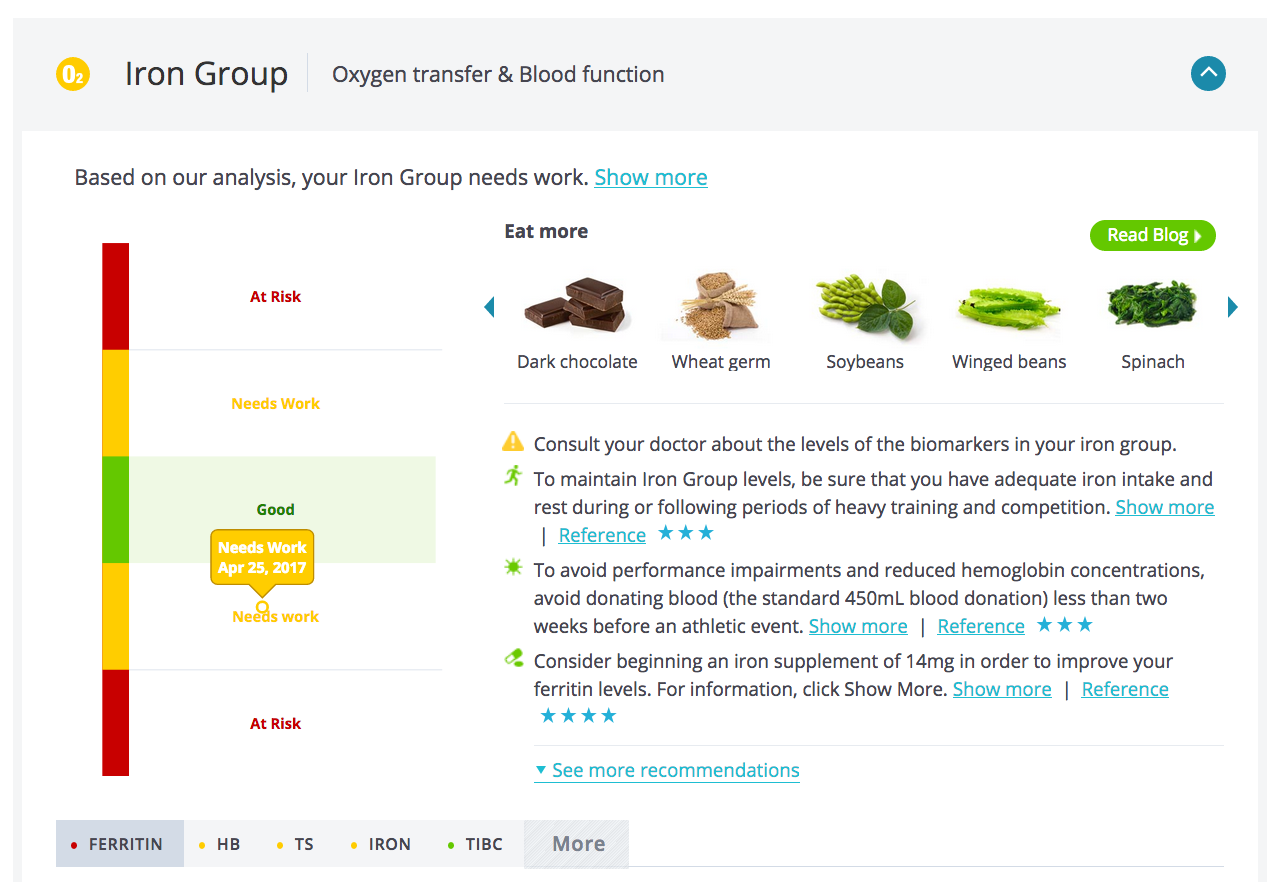

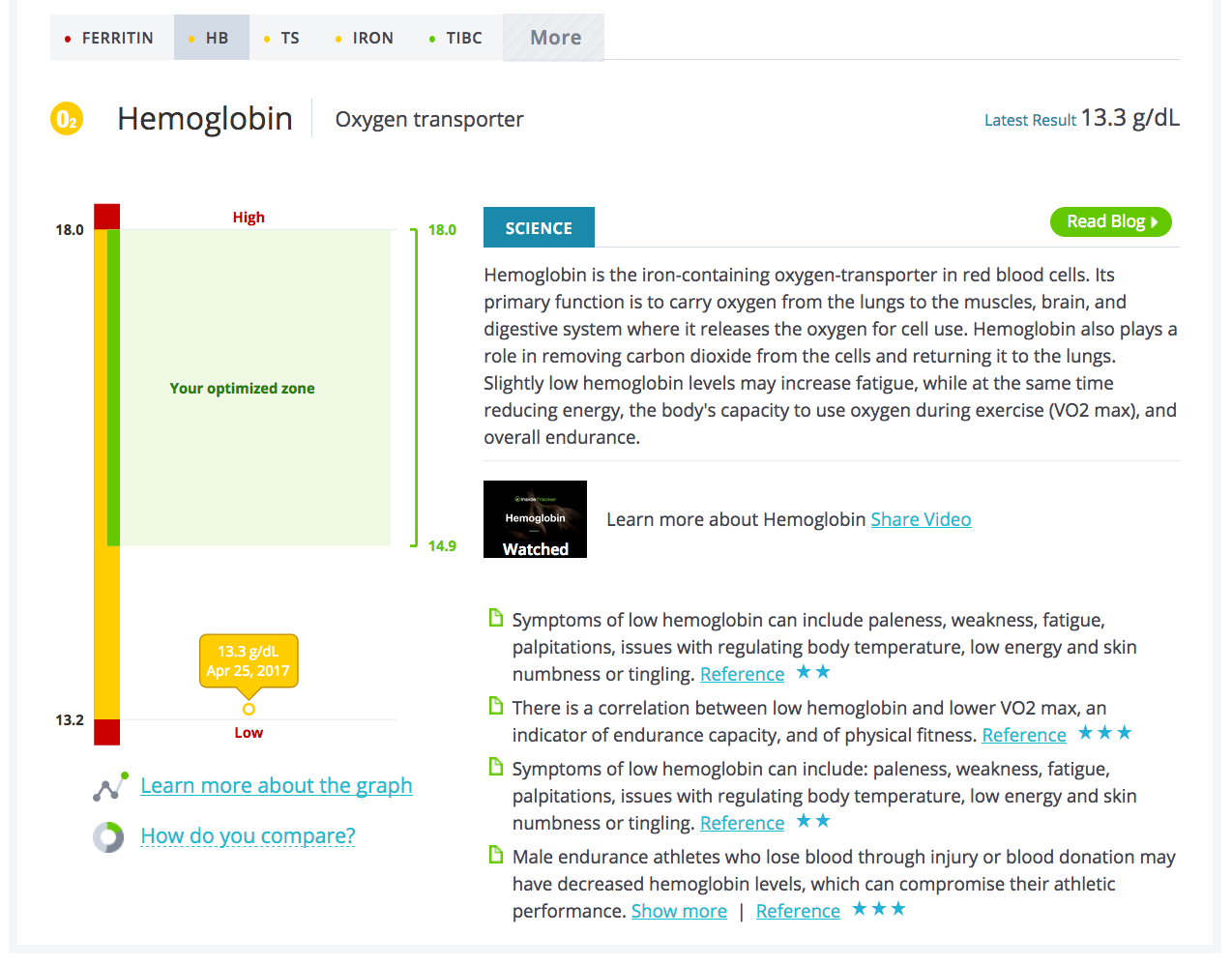
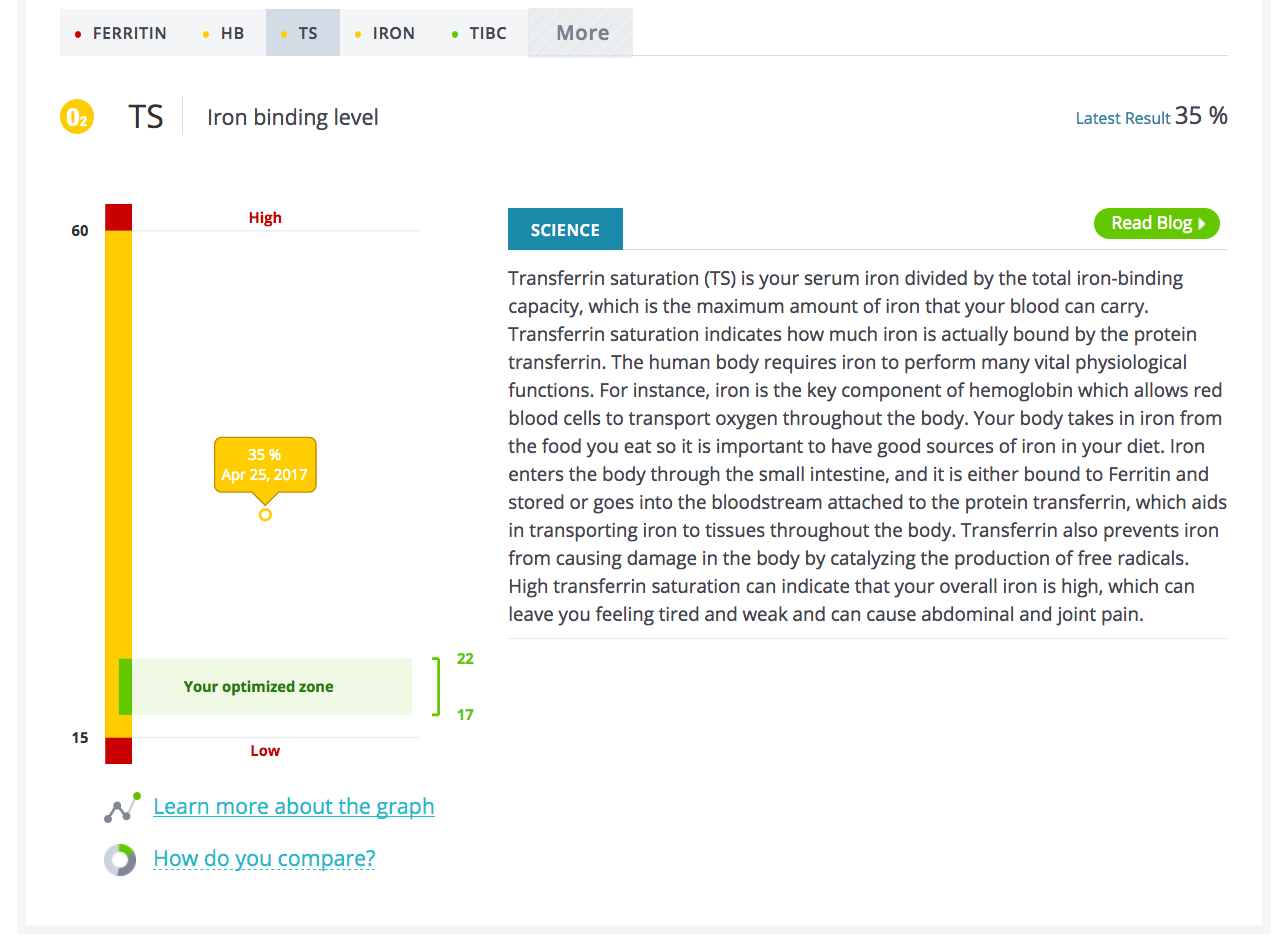
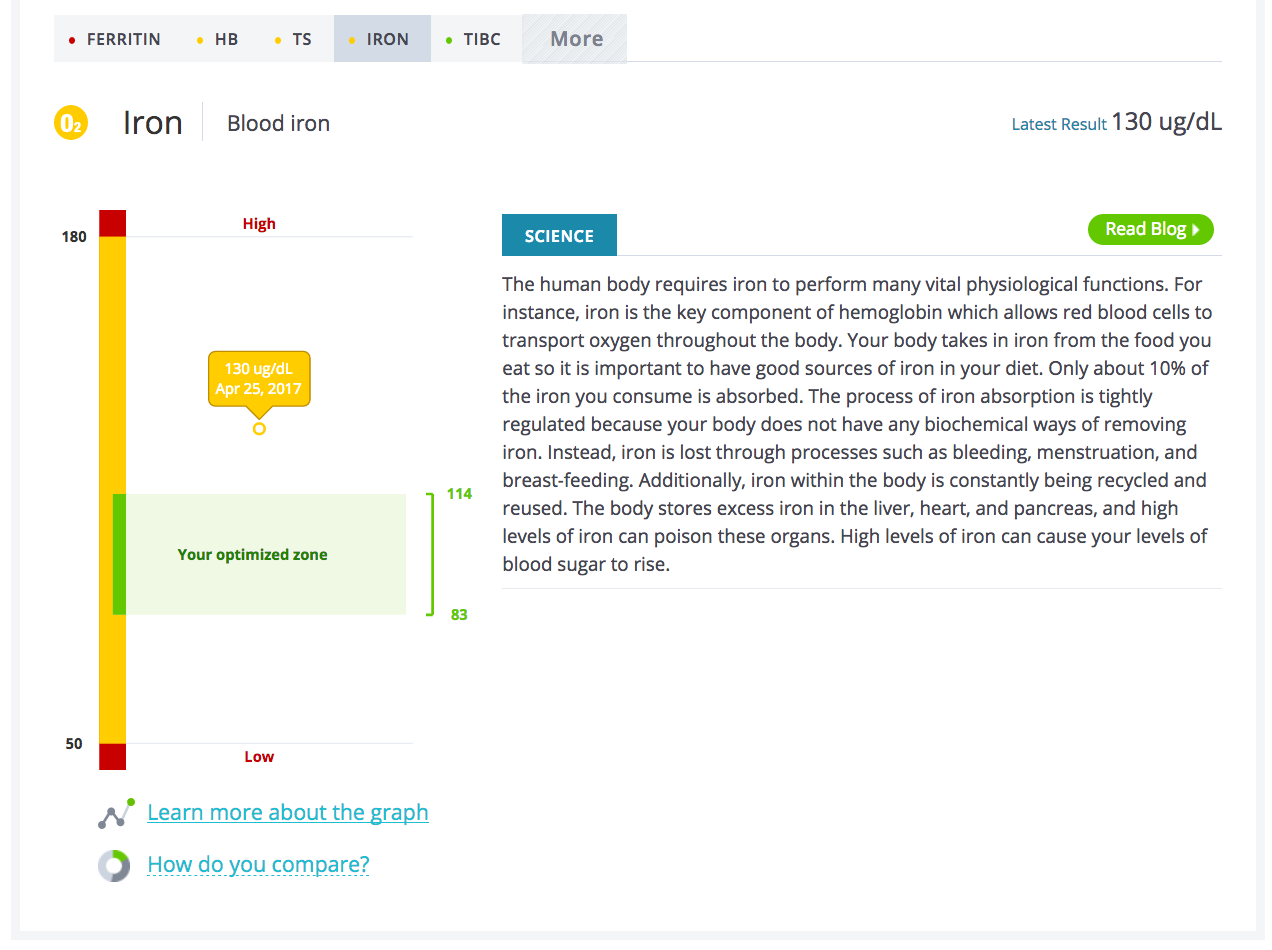
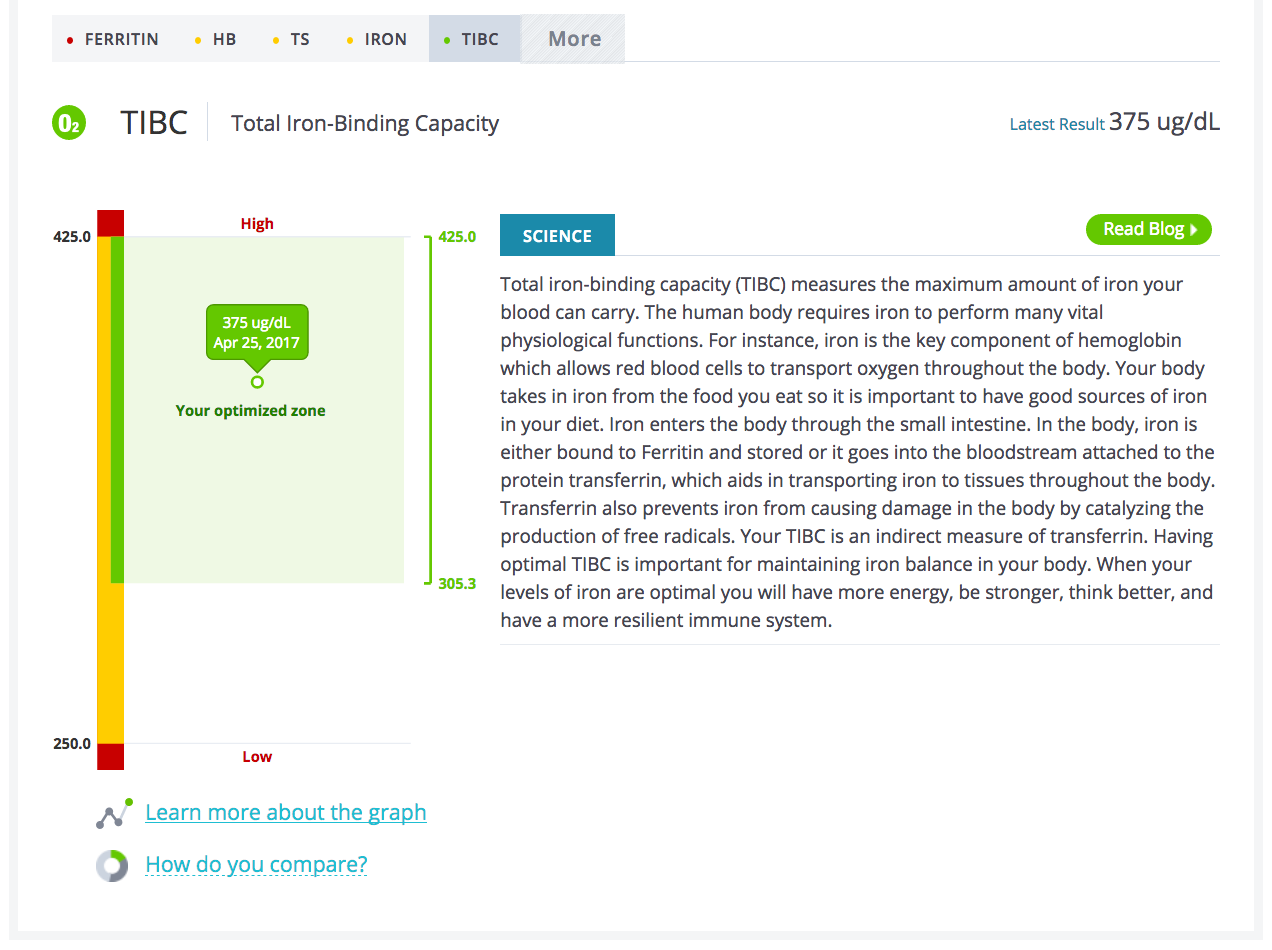
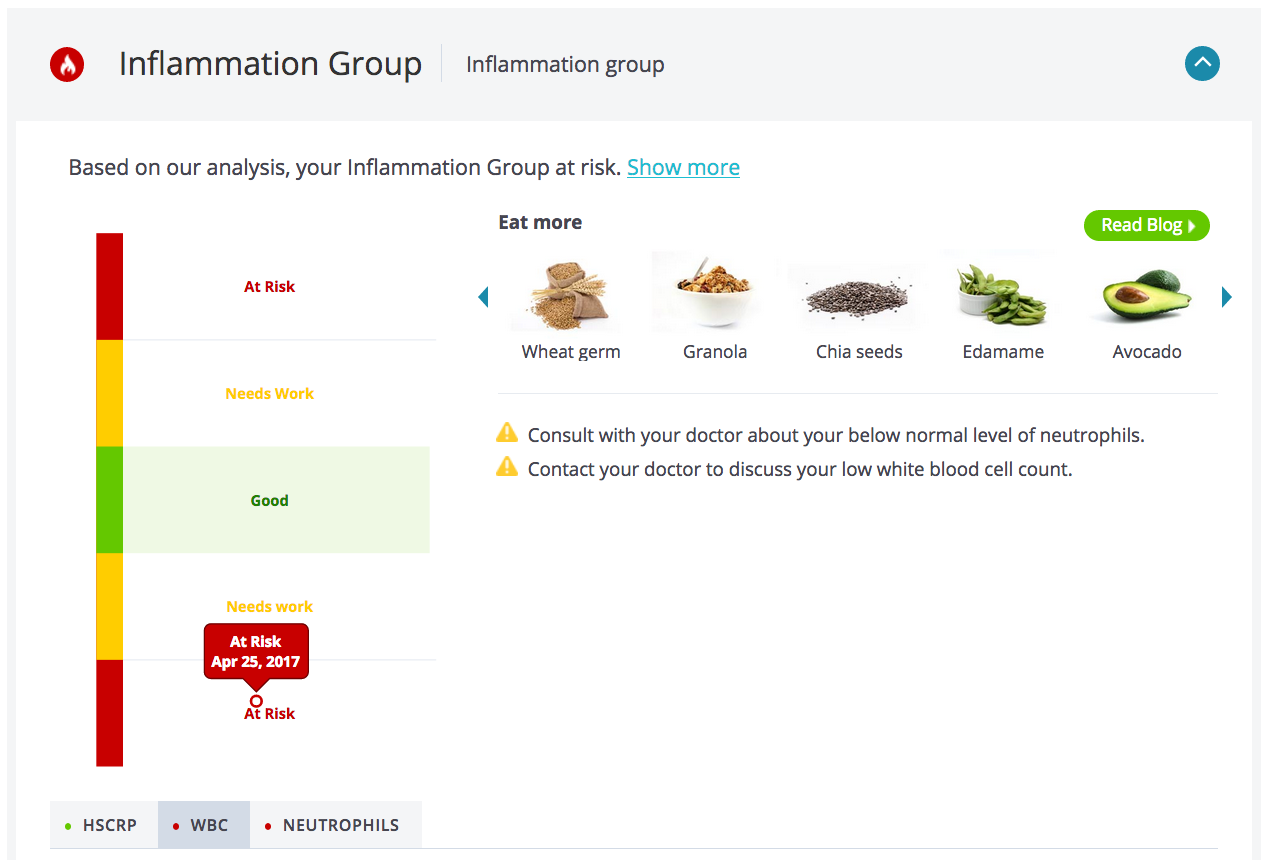
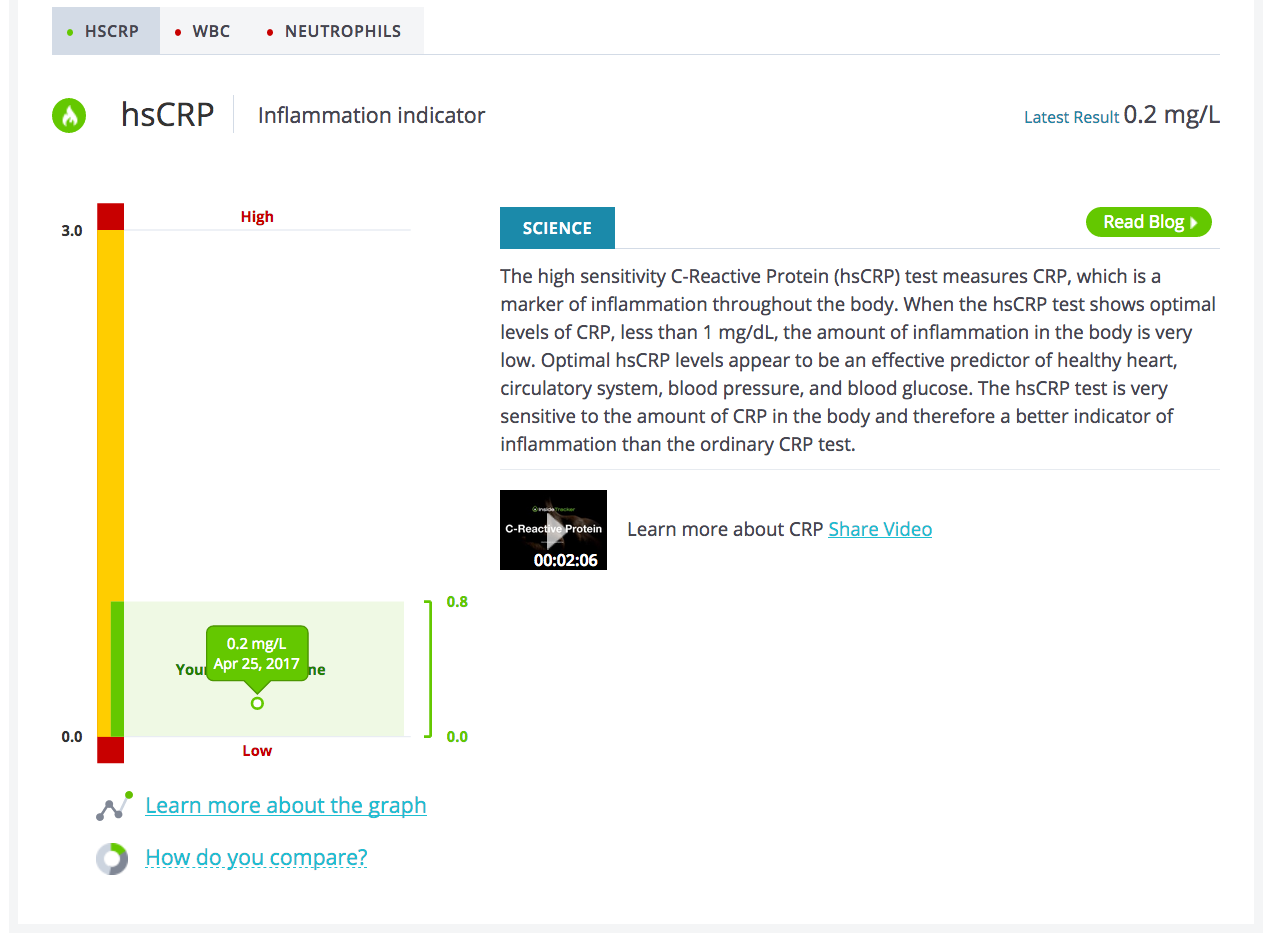
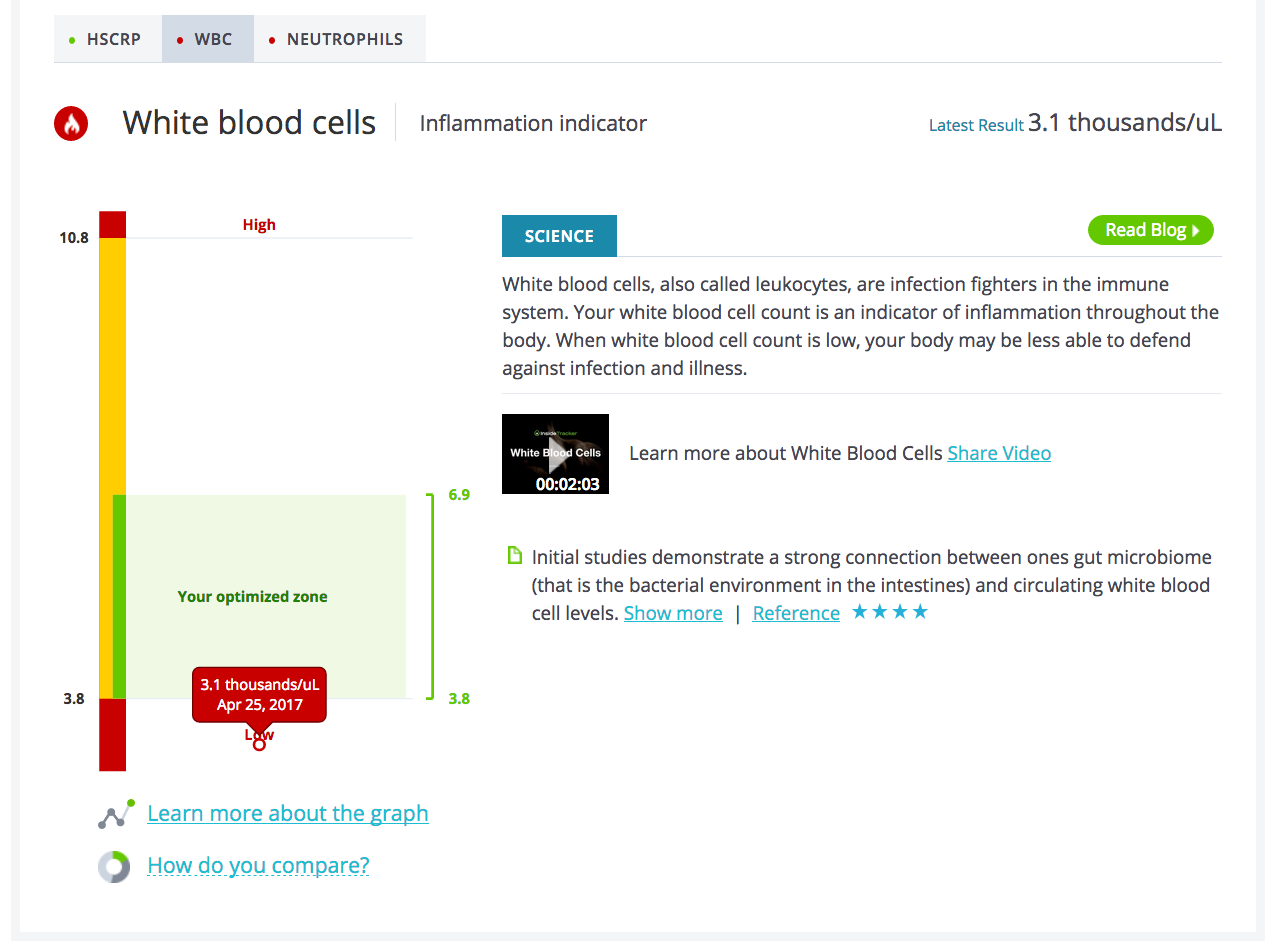

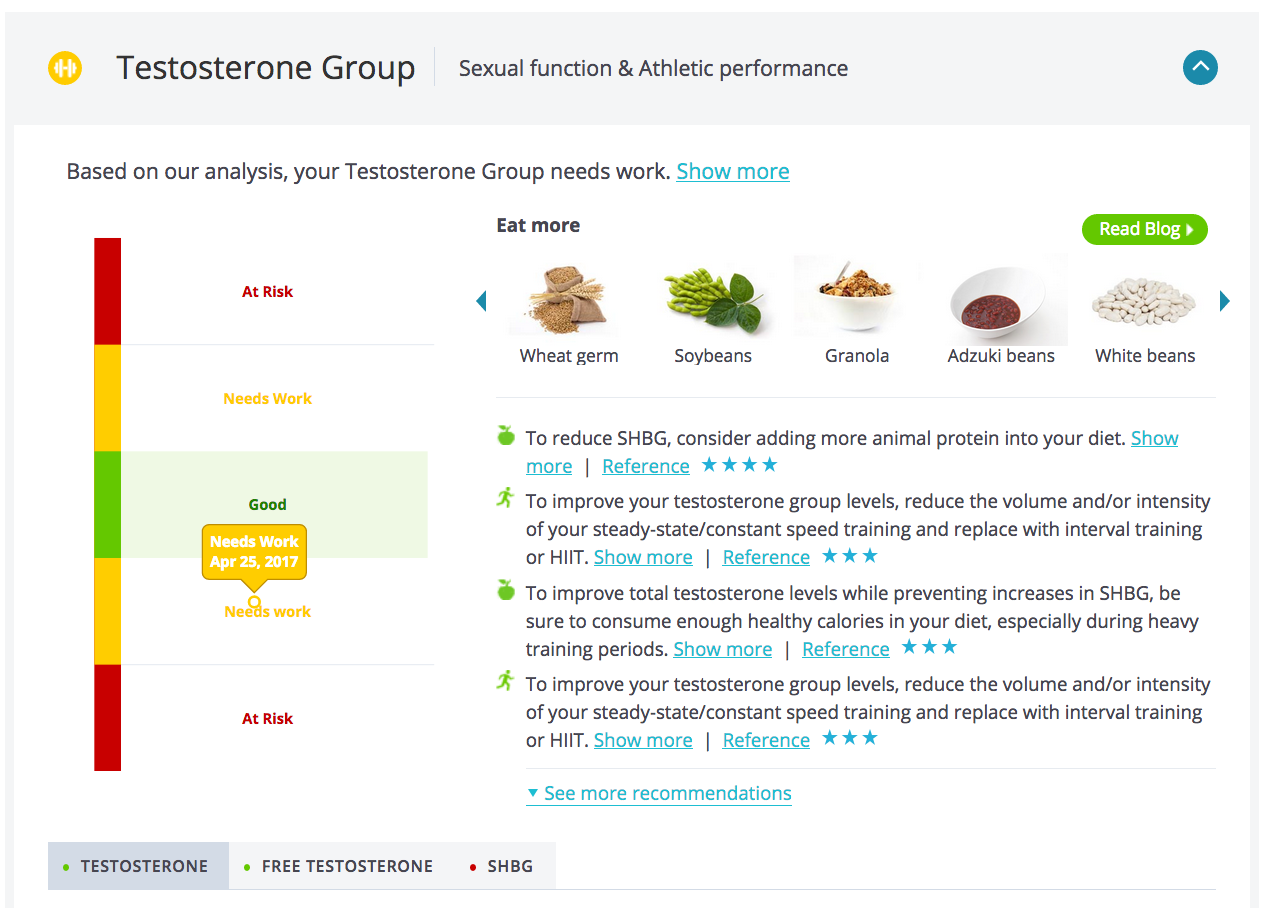
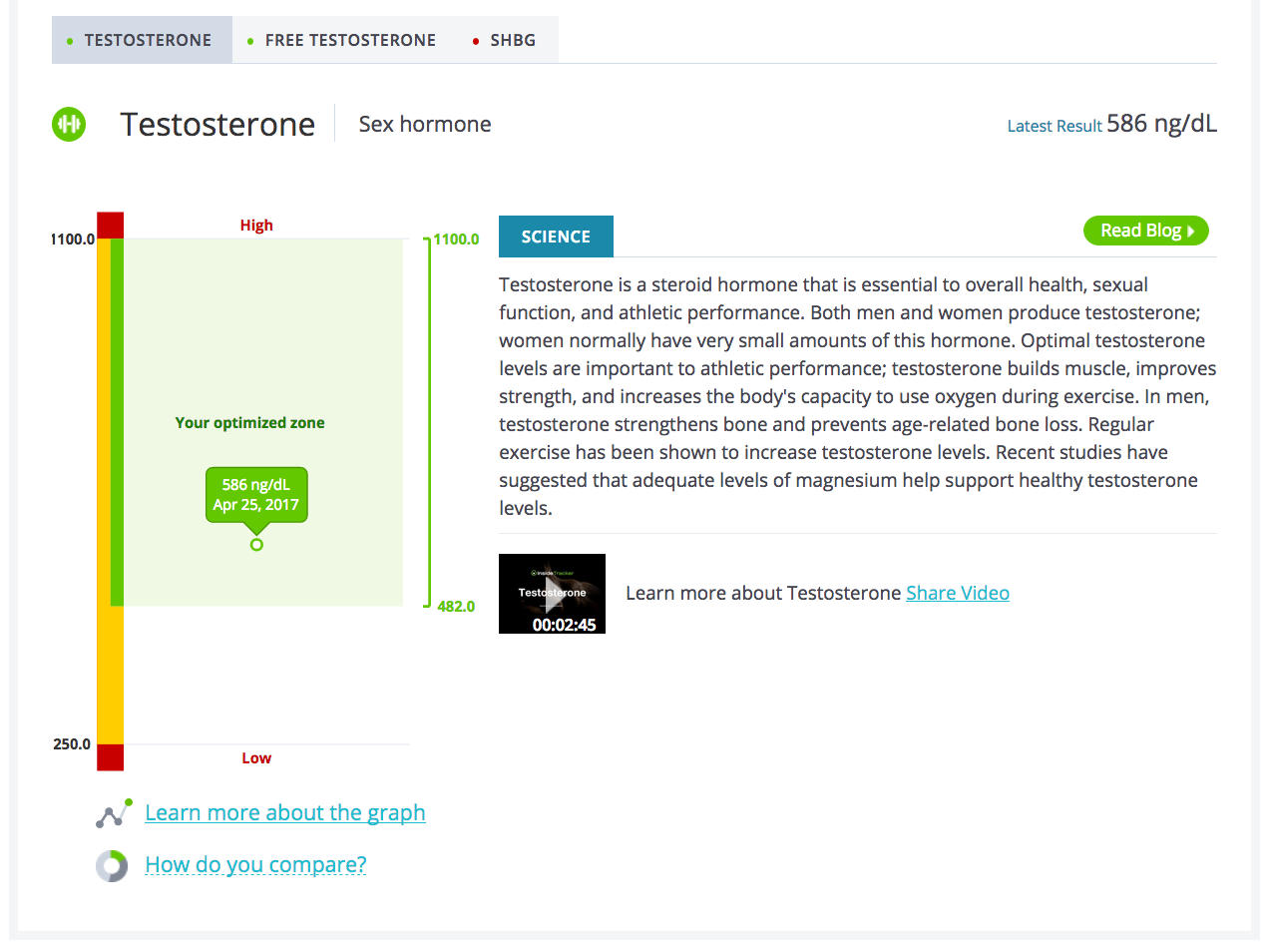
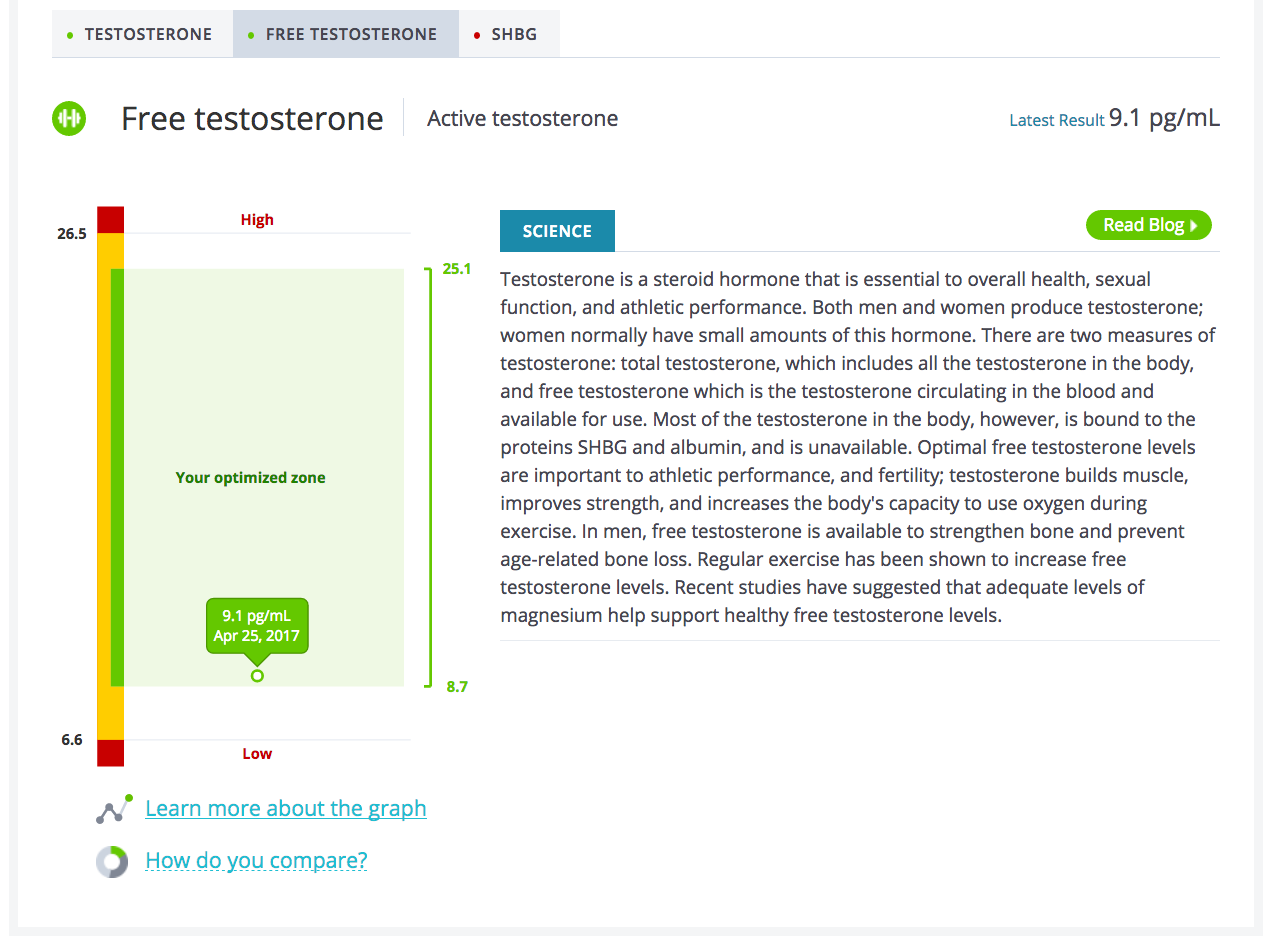
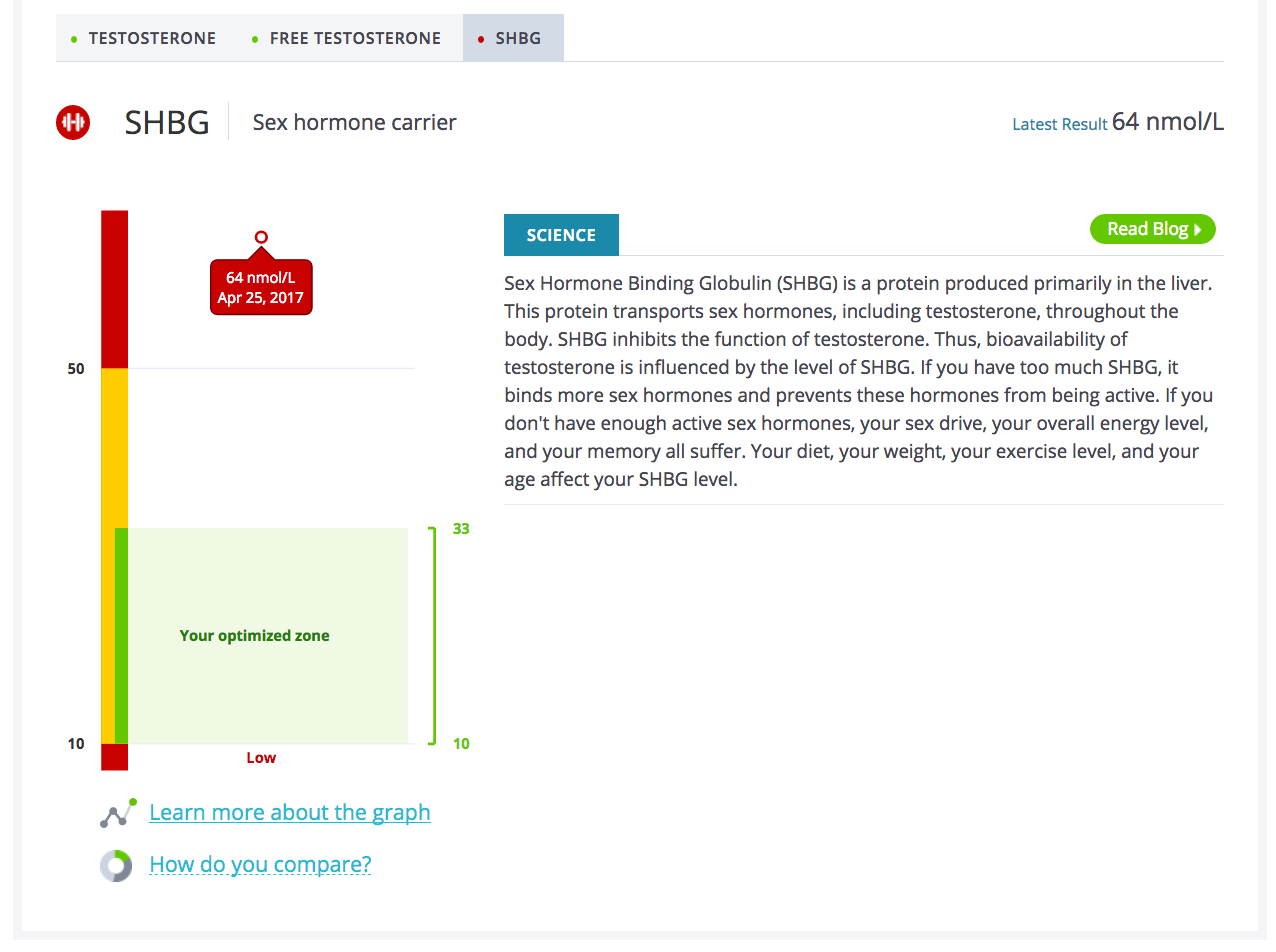
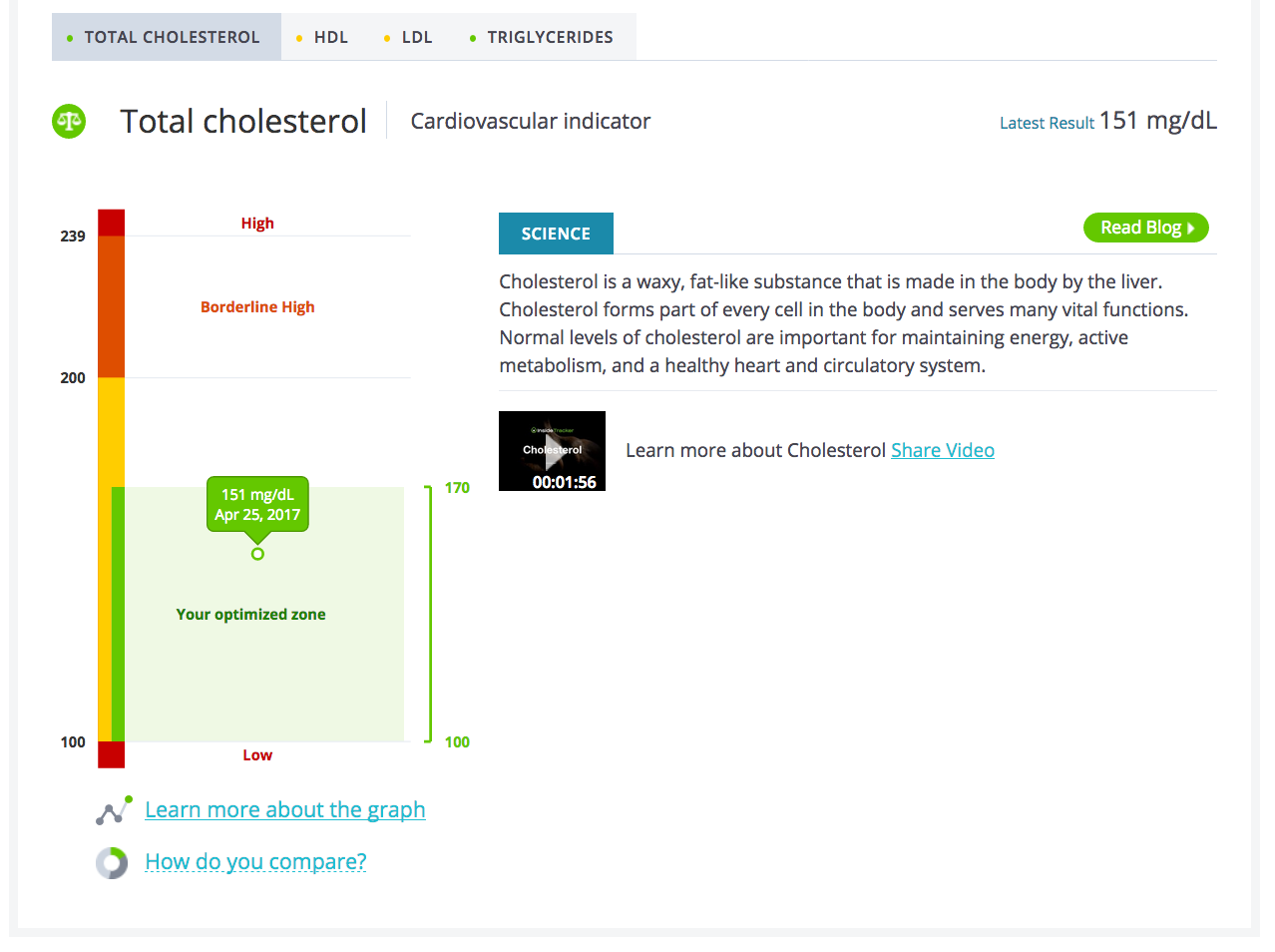
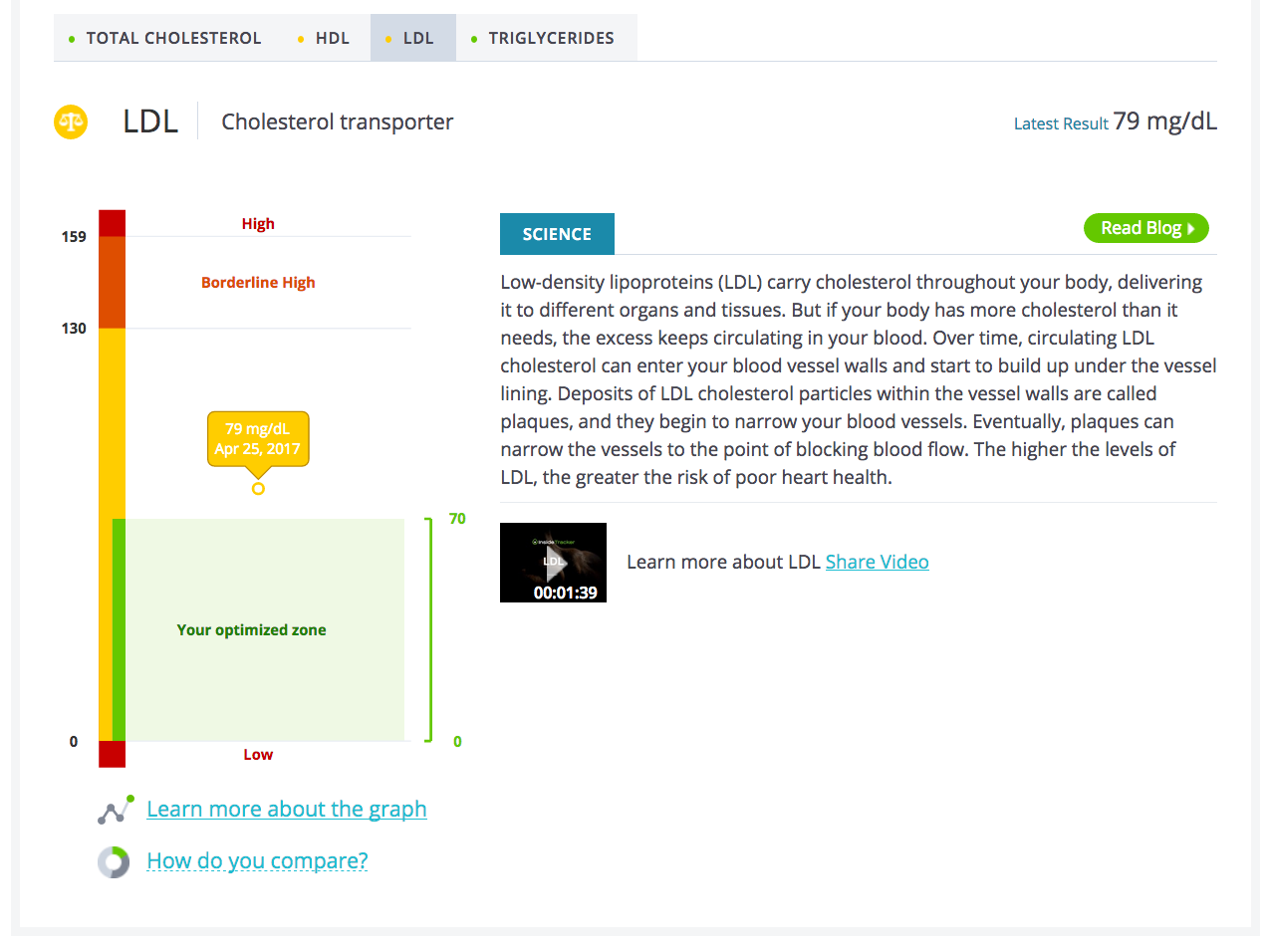
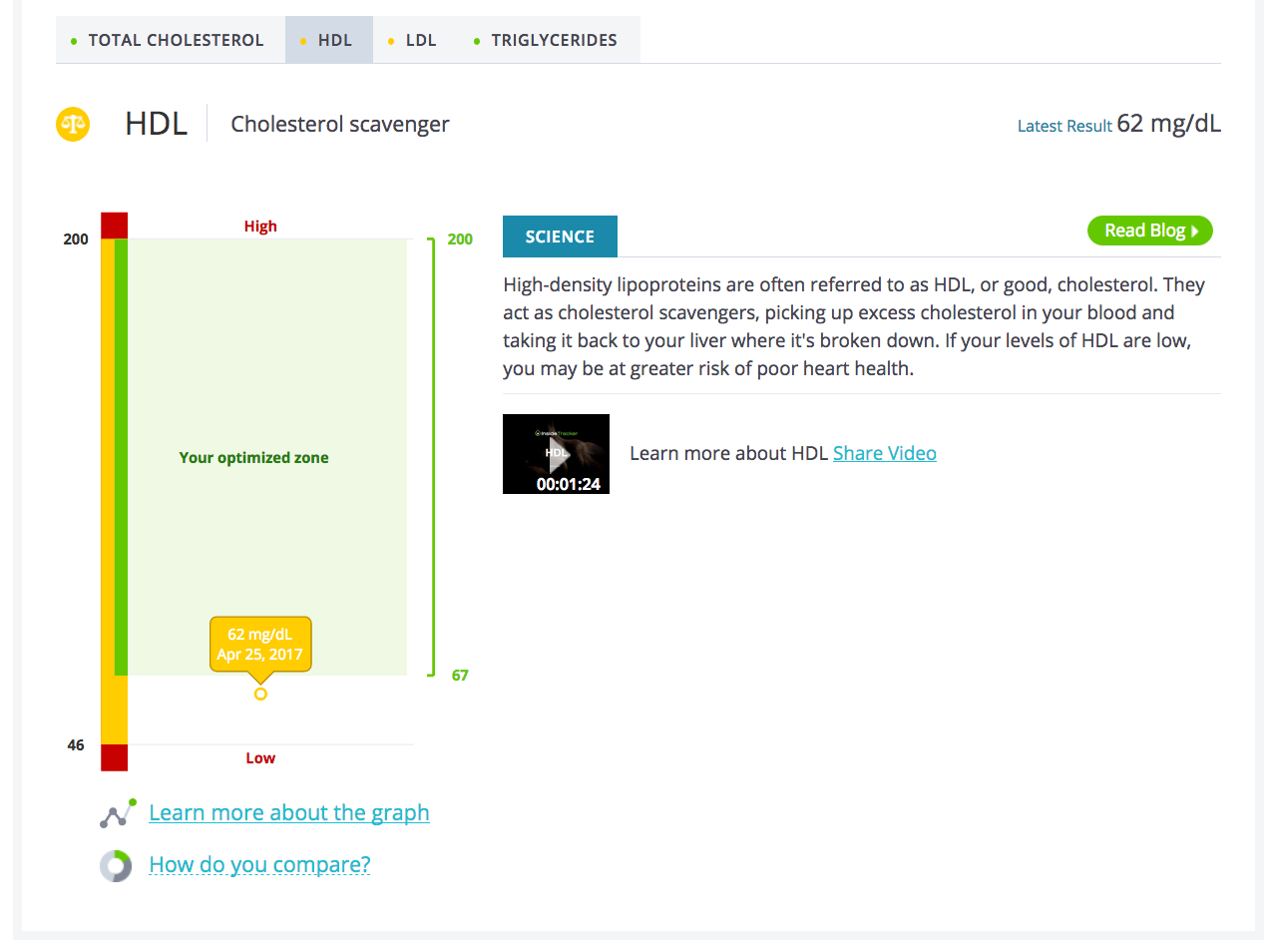
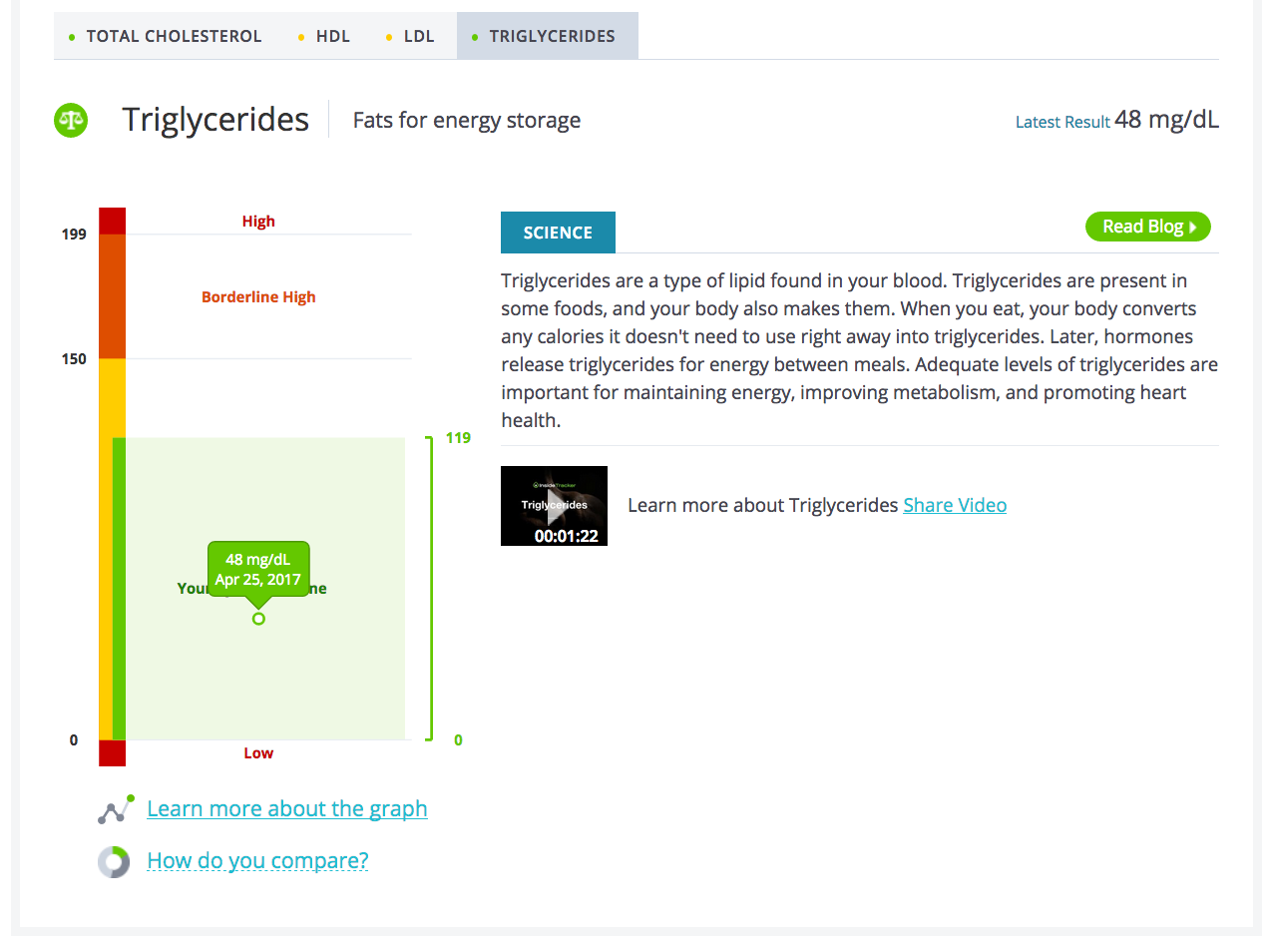
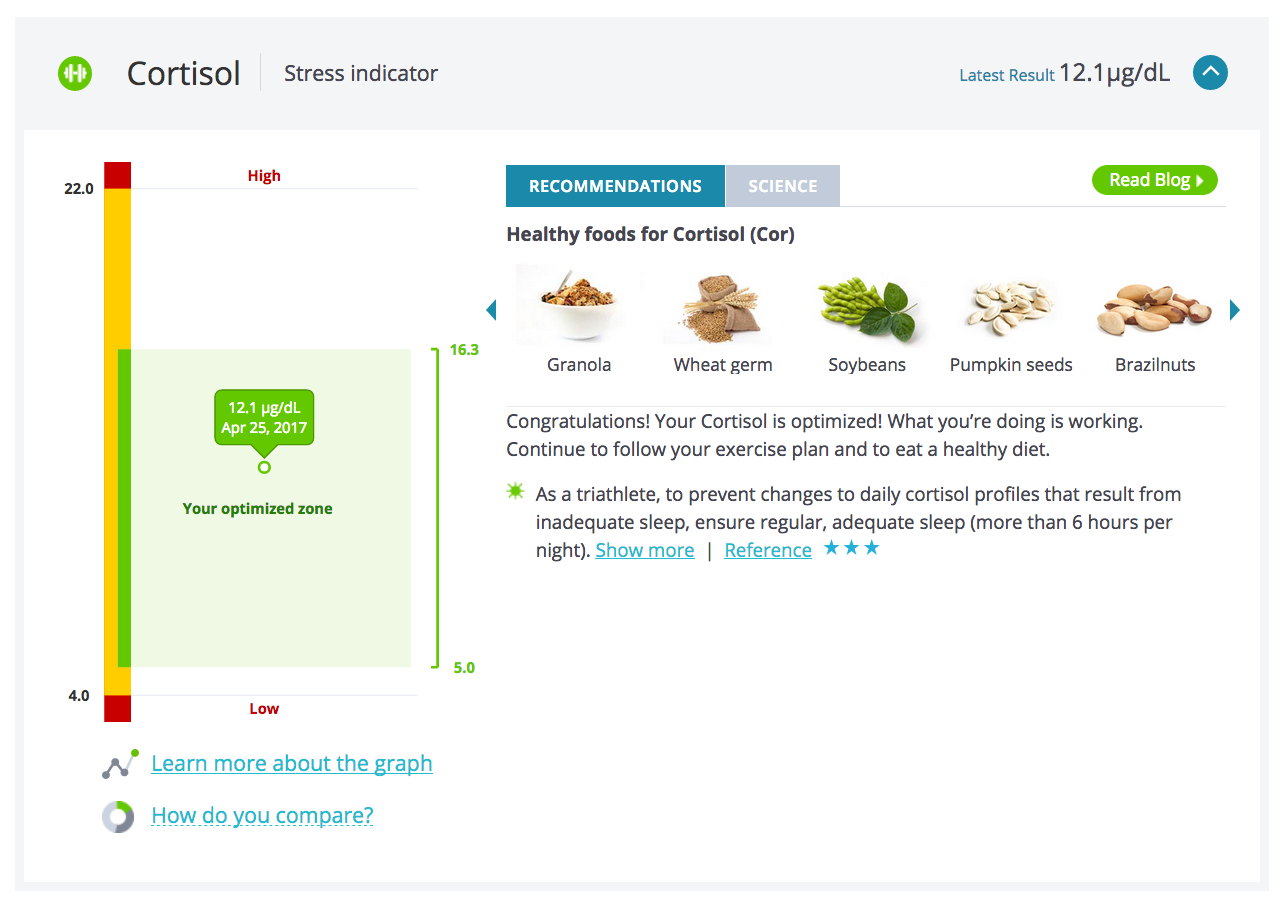
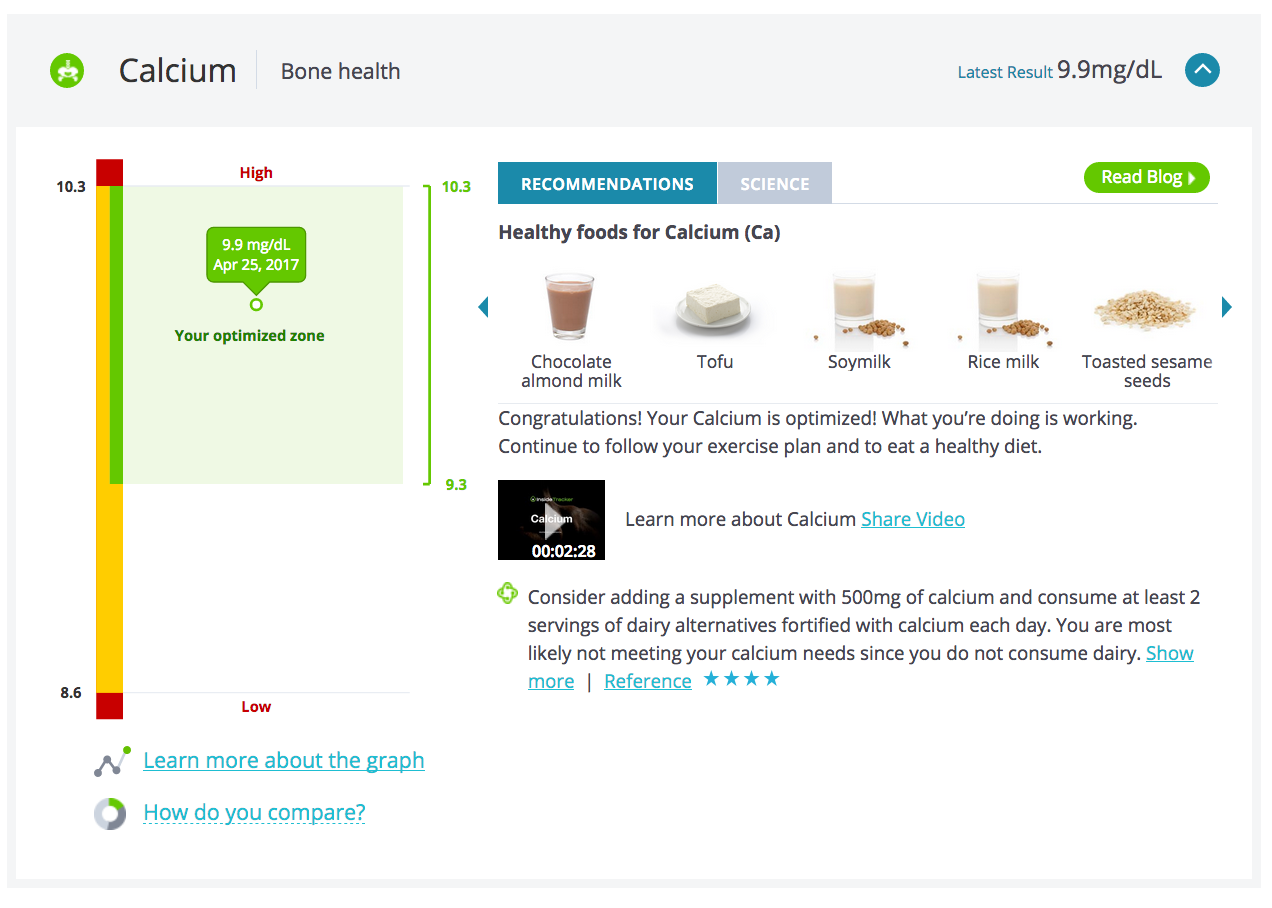

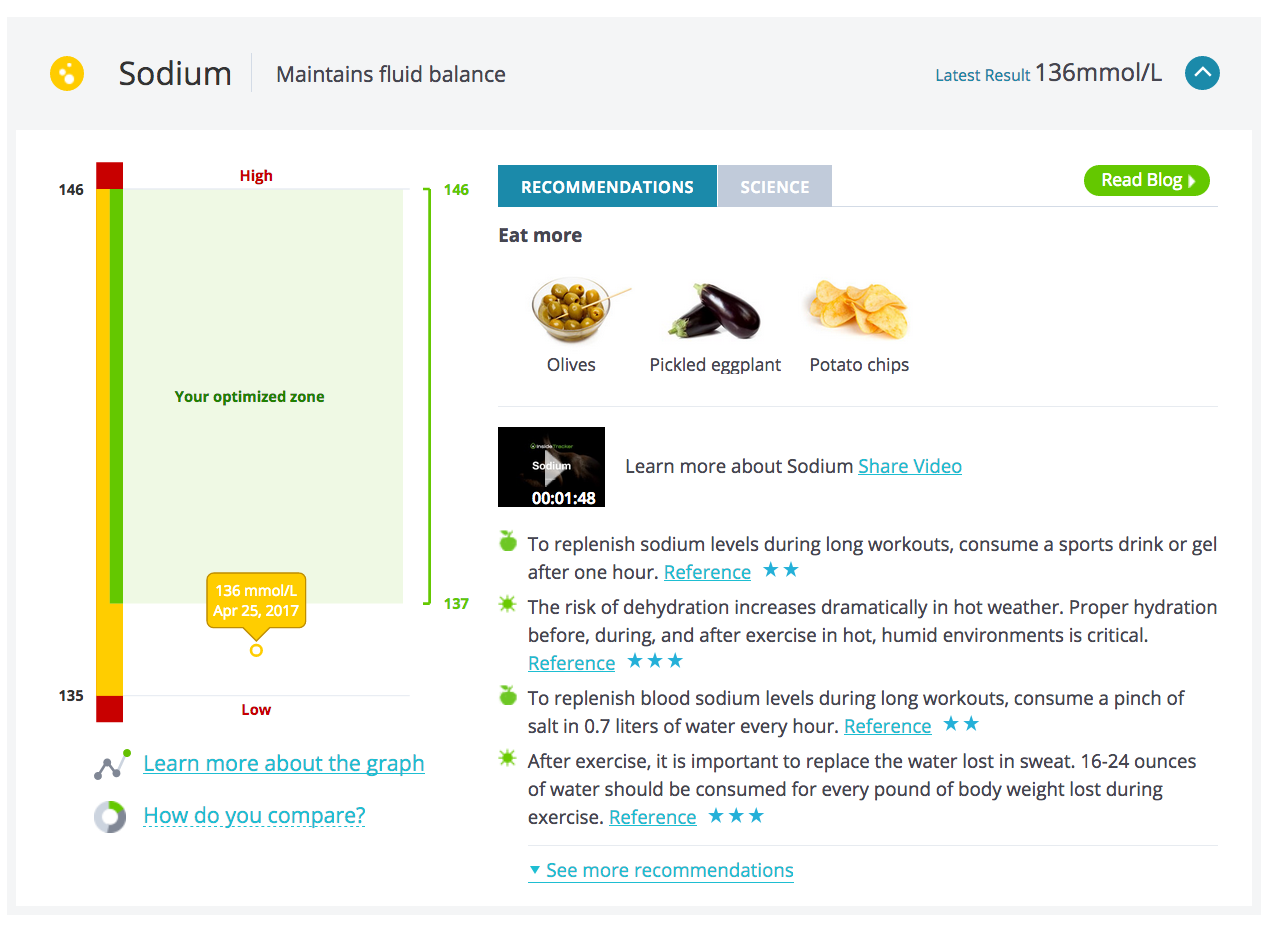

Key Takeaways For Everyone
Looking at my results, here are the 3 things I think everyone can benefit from knowing.
1. Check Your Cholesterol, even if you're a healthy eater
I'd argue that I eat more vegetables and fibrous foods than just about anyone on the plant. Still, my LDL cholesterol (79 mg/dl) isn't perfect (ideal range is 0-70 mg/dl, with 140+ being high). Despite all the exercise, I'm guessing I'd be in trouble if I ate the saturated fats in meat and dairy.
2. You're Probably low on vitamin d
I live in LA and train outside a lot, averaging 1-2 hours in the sun each day. (Just look at how tan I am...) I rarely wear sunscreen on anything other than my face. In addition, I supplement with 6,000 IU of Vitamin D each day (3 sprays of Dr. Mercola Vitamin D in the AM, 3 in the PM). Doing all this, I'm still just in the mid-range of optimal Vitamin D levels (55 ng/mL; optimal levels 32-100 ng/mL). N=1 here, but I'm just saying...
3. Lots of Sleep Makes A Big Difference
You've heard this a million times, but probably worth reiterating since too few make sleep a priority. Needless to say, I'm taxing my body with a lot of training, not mention all the stress that comes in day-to-day life. Impressively, my cortisol levels are great. This shows that when you're getting enough sleep (I usually move mountains to get at least 8 hours), you can keep cortisol levels down.
Takeaways For Endurance Athletes
1. Get Your Iron Checked (And In Check...)
While everyone is different, I know that I've struggled to keep my iron levels up with lots of training. Meat or no meat, I've had trouble. Everything I've read shows this to be a challenge that many endurance athletes face. While I'm sure there are plenty of vegetarian and vegan endurance athletes who maintain great iron levels, this is something I need to work on. Given the importance of iron in the transporting of oxygen throughout the body, I'd recommend making sure your iron levels are good. As triathletes, we simply put too much time, effort and money into training to not make sure these levels are up to par.
2. Big Volume Training Leaves You Susceptible to Getting Sick
When your fitness is high and you feel unstoppable, remember that your immune system is likely taxed from all the training. (As my white blood cell count shows...) Keep this in mind when traveling to races. I'm a big fan of taking Wellness Formula before any travel, but especially travel to and from races and training camps. I think it helps boost my flagging immune system when most needed.
3. Make Sure You're Eating Enough
My testosterone levels are good, which is awesome since it seems like many triathletes have low T from all the training. While T levels are good, I have high levels of Sex Hormone Binding Globulin (SHBG). WTF? I had never heard of this prior to the test, but InsideTracker tells me that SHBG inhibits the bioavailability of testosterone in my system. Fuck! The cause? In my case, calorie restriction. With races in the weeks prior to the test and having had a race on the horizon, I definitely was keeping myself hungry at times in an effort to be lean on race day. While being lean has its benefits when racing, focusing too much on it (especially a month out from a race) has drawbacks. High SHBG being one.
4. Add Some Salt
The vast majority of Americans are getting way too much salt in their diet. However, if you're an endurance athlete training in the heat, it's possible that you're not getting enough. I have a good bit of salt in my diet (I like this sea salt; likely best to avoid the Morton-style "land salt" shit) yet still came in just under the optimized zone (136 mmol/L; optimal range 137-146 mmol/L).
WHAT I’M DOING TO IMPROVE
I pretty much covered this in the above recommendations, but here's what I'll be doing to get my biomarkers to where they need to be...
- FOR IRON LEVELS: I'll be adding a plant-based iron supplement to my diet. I'll be sure to take it daily and will either take a Vitamin C supplement or eat a clementine when taking it. (Vitamin C helps with absorption.) I'll also try to limit my coffee intake... keyword is try... (Caffeine limits absorption.) I'm sure many reading will say, Just eat a hamburger. Honestly, even if this were the easiest way to get my iron levels back on track, I don't think it would be worth the cost. I attribute much of my health, energy and recovery to eating plant-based so am not willing to trade this for a (potential) quick fix with iron. Again, plenty of plant-based endurance athletes have no issues with iron, and plenty of meat-eating ones do. I just happen to need to supplement with my current training.
- FOR SODIUM LEVELS: I'll add salt tabs to the fluids I drink on hard training sessions that have me kicking out serious sweat. I'll add a touch more high-quality salt to my foods.
- FOR TESTOSTERONE (PARTICULARLY SHGB): I'm going to eat when I'm hungry. Pretty groundbreaking, I know. I do think that many endurance athletes obsess a bit over weight. I'm guilty of it at times since I know you run more easily when you're lighter, you go faster on the bike with a higher watts/kg ratio, and manage heat better with less fat. That said, it's detrimental to be running a calorie deficit all the time. I'll look to improve this.
- FOR CHOLESTEROL: I eat a lot of coconut butter and a moderate amount of coconut oil. Hard to be sure, but I'm guessing this is why my LDL cholesterol is not perfect. While my triglycerides levels are great and I'm at no risk of any heart issues, I'll probably cut back slightly on the coconut butter.
- FOR BLOOD SUGAR: While my diet outside of training has little to no processed sugar in it, I was relying a bit more on sports drinks for fueling around the time of the test. Some of this was due to the block of races and wanting to get my stomach used to the drinks, but some of it was out of convenience. I'm back to using my standard fueling tactics.
Using InsideTracker
I found the whole process super easy. I picked the plan I wanted on InsideTracker and they emailed me the information to bring to Quest Diagnostics. I set up an appointment at a nearby QD, making the appointment in the AM on a day where I had a chill training schedule the day prior. This made the 12 hour fast and 24 hours without intense exercise easy to manage. The Quest appointment took maybe 20 minutes from walking in to walking out; 15 minutes of that was just waiting for my turn to have blood drawn. They only needed 3 vials of blood for all the tests, so I felt fine afterwards. I even did a pretty hard 2hr bike-run brick workout in the evening with no issues. I had the results 3 days later.
I did the Ultimate package ($589), which they gave me at a discounted price. For the first test, I think it makes sense to go with the Ultimate so that you can see everything and ID any issues. For me, now that I've seen all the biomarkers, most of my future tests will be ones that show just what I need to improve on. The High Performance package ($299) is what I'll do next. Maybe Essentials ($189) after that.
While expensive, my plan is to only test 2-3x a year. I feel like that gives me everything I need to know. Yearly routine will probably be Ultimate -> High Performance -> Essentials. Given the cost of racing and the huge effort and time that goes into training, the spend here is worth it in my opinion. I only wish that I had known about my iron levels sooner...
Again, if interested in using InsideTracker, they've given me a discount code to share with readers. Discount code is LOH10 for 10% off any of the packages + a free InnerAge test ($99).
Share any questions or comments below. I'll look to check back in around September with new results to show progress, etc.
Related Posts
WHAT I EAT & HOW TO MAKE IT - SUPER DANK & EASY VEGAN RECIPES
FUELING FOR THE VEGAN ATHLETE – TIPS FOR PRE/DURING/POST WORKOUT NUTRITION
WHAT TO EAT & DRINK BEFORE A TRIATHLON: HERE'S A LOOK AT MY ROUTINE
Like the blog? Show your support by using the Amazon banner ad at the bottom of the page (and linked here) when making your Amazon purchases. Comes at no cost to you and makes a big difference in helping me keep the site up and running. Huge thanks to all who have made a habit of doing this!

